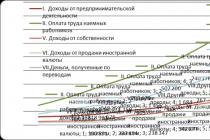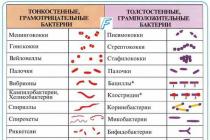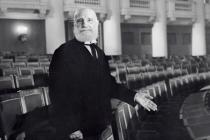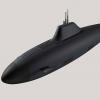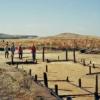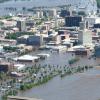Beautiful St. Petersburg is hard to imagine as a city of skyscrapers, but high-rise construction is rapidly breaking into the city of Petra. The majestic Lakhta Center will soon become its first "swallow". At the same time, the Leningrad Tower will not be an ordinary skyscraper, but the second tallest among similar Russian and European buildings, bypassing the "Federation" in "Moscow City" and yielding only While the building is being built, there is time to learn interesting details about it.
General idea of the project
"Lakhta Center", "Lakhta Center" (both spellings are correct) - a public and business complex currently under construction. Its scale is explained by the fact that the headquarters of the largest Russian corporation Gazprom will become the key object of the skyscraper. Location of the complex - Primorsky The construction of the tower was started in 2012. Its full completion is planned for the third quarter of 2018.
The maximum planned height of the Gazprom tower in St. Petersburg with antenna/spire is 462 m. The top level of the very last floor will be 372 m above the ground. The mass of the building with filling will be 670 thousand tons. The complex will include not only the tower, but also a multifunctional building, which will be divided into the northern and southern parts of the atrium. The total area of the future building will be 400 thousand m 2 . How many floors are there in the Gazprom tower in St. Petersburg? The final number will be 87. The building will be serviced by 102 elevators.
Tower construction progress
Let's touch on the key stages of the construction of the Gazprom tower in St. Petersburg:
- 2013 - a foundation pit was dug for the building.
- 2014 - completion of the construction of the pit, the beginning of pile driving.
- 2015 - the completion of the so-called construction: the manufacture of a box-shaped foundation, reinforcement and concreting of the minus floors.
- 2015-2016 - erection of the first 50 floors of the skyscraper and 7 floors of the MFZ.
- February 2017 - the 60th floor (260 m) was built.
- April 2017 - work on the construction of the 67th floor (300 m).
- May 10, 2017 - reaching a mark of 327.6 m and 78 floors, the skyscraper became the tallest building in the northern capital, "overtaking" the TV tower. The latter held this title for 55 years.

The concept of the Lakhta Center project
According to the project team, this tower, directed to the sky, like a rocket at the start, located on the shores of the Gulf of Finland, will form new standards of city life with its appearance and content:
- developed social infrastructure;
- modern offices that meet all global environmental requirements;
- comfortable public spaces;
- an abundance of green areas;
- pedestrian and transport accessibility.

The main task of the so-called Gazprom tower in St. Petersburg is to rid the historical center of business and business activity, and at the same time the dominance of transport, transferring the focus of this activity to the outskirts of the city. The skyscraper will not only help the second capital to switch to a polycentric development model, but also attract significant investments, create new high-paying jobs, and create all the conditions for business development.
Architectural solutions
St. Petersburg is a city of contour lines, not skyscrapers. All of its historical high-rise buildings - St. Isaac's, Peter and Paul Cathedral - are the central points around which independent and integral ones lined up. bay, away from historical buildings.

The tower is designed to begin to form the "marine facade" of St. Petersburg. Its appearance does not at all conflict with the "face" of the city - the same theme of a lonely spire on the horizon, aspiration upwards, the contours of buildings, reminiscent of the outlines of the hull of ships.
The shape of the Lakhta Center, according to the architects, should visualize openness, lightness, freedom, the flow of spaces and the energy of the sea. They strive to give the complex the effect of weightlessness and organic unity with the surrounding city and nature. A special kind of double-glazed windows will help in this, which will allow the building to change its color depending on the mood of the sky.
What will be inside the complex
The popular name of the Lakhta Center - the Gazprom tower - is not entirely correct. The project of the "stuffing" of the complex impresses with its versatility:
- It is planned to allocate only 43% of the total area for office space.
- 2.5 thousand m 2 will be occupied by a medical center.
- 7 thousand m 2 will be guaranteed to be provided to the children's scientific and educational center "World of Science", which will include lecture halls, laboratories, and an exploitatorium.
- It is planned to open a planetarium in the building, in which 140 people will be able to simultaneously observe celestial bodies.
- It is planned to build a transforming multifunctional auditorium designed for almost 500 people.
- Floors 74-76 (330 m) are planned to be used as a two-story panoramic restaurant.
- At an altitude of 357 m above the ground, on the 83rd-86th floor, there will be an observation deck equipped with powerful telescopes.
- The MFZ will allocate 1.5 thousand m 2 for exhibition space.
- An imposing amphitheater with 2,000 seats is also planned. Various water shows will be held on its stage with an area of almost 1.5 thousand m2.
- A part of the complex will also be a covered pedestrian bridge, which will connect the space of the Lakhta Center with the park of the 300th anniversary of the city.

Other characteristics
Let's get acquainted with the interesting technical and design features of the Gazprom tower in St. Petersburg:
- The skyscraper stands on 264 piles, each of which is 2 meters in diameter and 82 meters deep.
- The reinforced concrete core is responsible for the stability of the tower.
- The horizontal rigidity of the skyscraper is achieved by outrigger floors - there will be 4 pairs in total. The outriggers will keep the tower stable even if it loses 30% of its supporting structures.
- Cold-formed glass technology is responsible for the innovative three-dimensional curvature of the facades of the complex.
- The illumination of the Lakhta Center is light "pixels". Their color will depend on the season of the year.
- Recycle waste will be an innovative garbage disposal.
- Near the complex it is planned to open a metro station under the working name "Lakhta".

Finally, let's look at interesting facts related to the St. Petersburg tower:
- Concreting of the bottom slab of the foundation of a skyscraper was included in the Guinness Book of Records as the most voluminous continuous pouring of concrete in the world. It lasted 49 hours, during which 19,624 cubic meters of concrete were poured.
- 400 thousand cubic meters of concrete will be spent on the construction of the entire complex.
- The area of the glass surface of the tower will be equal to 77 thousand m 2 . The weight of each double-glazed window is more than 700 kg.
- In July 2016, the skyscraper became the tallest building in St. Petersburg. He was able to achieve this title in just 10 months.
- In August of the same year, Lakhta Center became the northernmost skyscraper in the world.

Surprisingly, the tallest skyscraper in Russia will be located in St. Petersburg, the city of contour lines. In addition to the height, the Lakhta Center project impresses with its versatility, well-thought-out concept and organic architectural solution.
I managed to visit a variety of construction sites, ranging from residential buildings to large-scale projects of thermal and nuclear power plants, but I have never been to a skyscraper construction site. I recently filled this gap in St. Petersburg, having visited the construction of the tallest skyscraper in Russia and Europe. In general, this skyscraper is considered the best in many respects, but first things first.
Today we will see how the Lakhta Center is being built. Stock up on tea and cookies, because this report will be as long as a skyscraper).
Construction of the tower began in 2013 from a zero cycle. First, construction and installation equipment was produced, then bored piles were installed, a box-shaped foundation was erected and work began on creating a foundation pit, the excavation of which was completed in 2014.
The creation of the foundation pit was preceded by the installation of a wall in the ground, 30 meters deep. It was needed to protect the future pit from shedding and groundwater. After that, piles were driven in, and then a foundation pit was dug out. Its depth was 21 meters.
I, like many others, had a question - how could a skyscraper be built in a swamp? In fact, the tower was not built on a swamp. Of course, the soil on the surface is not the hardest, but at a certain depth, very dense and hard rocks begin.
Moraine deposits excavated during drilling.
This laconic retelling of course does not convey the scale of the zero cycle, but the photos speak for themselves.
In total, 264 piles were installed in dense layers of soil, each with a depth of 82 m and a diameter of 2 m. A foundation was installed on them. The total pile load is 670,000 tons.
A small infographic for more clarity.
This is how the reinforcement frame was made for the piles that are under the tower
Under the multifunctional building (MFB) and the arch, 848 piles with a diameter of 1.2 m were installed, and 968 piles with a diameter of 60 cm under the stylobate (underground parking).
The box-shaped foundation consists of three densely reinforced slabs, the lower slab is 3.6 m thick. The diameter of the reinforcement is 32 mm, the reinforcement spacing is 16.5 cm, and 15 mesh levels are installed in the lower slab.
Between the three slabs of the box-shaped foundation will be the underground floors of the skyscraper. Also, 10 radial walls go from the core to the outer perimeter. Their thickness is 2.5 m, and the height is 5.5 m.
The reinforced mesh, which will soon be filled with concrete, goes down 3.6 meters.
By the way, when concreting the bottom slab of the tower foundation, on March 1, 2015, a record was set, which was included in the Guinness Book of Records as the largest continuous pouring of concrete in the world. In 49 hours without stopping, 19,624 m³ of concrete was poured, 3,000 m³ more than the previous world record.
After the foundation was ready, the zero cycle was completed and the tower began to grow upwards.
The construction scheme of our skyscraper is as follows - first, a reinforced concrete core is built, then it is gradually overgrown with walls and ceilings. The core gives stability to the tower structure, and inside it are communications, 34 elevators, technical rooms and security zones.
By the way, the core of the Lakhta Center has the highest degree of fire protection REI240 - the ability to withstand fire for 4 hours without changing the properties of concrete and steel.
Construction at the facility is ongoing 24 hours a day, seven days a week, in three shifts. 4 thousand people work in each shift.
This is what the first 16 floors of the tower look like, which are assembled from 22,000 elements connected by 200,000 bolts.
A few months later, the core of the tower was overgrown with floors and rose even higher. Nearby you can see the MFZ building that has grown during this time, which consists of two parts, united by a common roof.
May 2016.
Construction phase in February 2017. On the left is a diagram of the tower.
If the core gives the tower vertical rigidity, then the outrigger floors are responsible for the horizontal rigidity, thanks to which the stability of the tower will remain even if 30% of the supporting structures are removed. The skyscraper will have 4 pairs of outrigger floors every 70 m along the entire height of the building.
This is how they look from the inside. Here you can see that the metal structures are covered with high-strength concrete. 
And these are the floor plans, starting from the bottom and ending with the top. The peculiarity of the Lakhta Center tower is that the sides of the pentagonal building twist upwards, giving it a characteristic architectural volume.
This is what Lakhta Center looked like in the spring of 2017.
On this collage you can see how the Lakhta Center tower grew from September 2015 to April 2017.
And this is a fresh photo from the construction, which I took in early August. 
I went up to the 76th floor. Cranes are attached to the core of the tower on several floors. A little later, I'll show you how it looks. There are 4 cranes at the very top, and there are 16 of them at the construction site. 
These are the largest luffing jib cranes manufactured by Liebherr. The departure of their arrows is 45, 50 and 60 meters. The maximum carrying capacity is 64 tons, the speed of cargo movement is 176 meters per minute. 


Well, now let's go to the construction site. 
Since Turkish contractors work here, and many foreign workers, warning signs are duplicated in Turkish and English. 
MFZ building. 
Up close, the tower looks very impressive. 
The elevators were installed in March 2017. You see the blue doors - they are behind them. 
Here, each elevator has its own elevator operator. After the construction is completed, the elevator doors will look familiar, but during construction, everything looks like this. Between the elevators there are interchange nodes from the lower zone to the middle one, and from the middle zone to the upper one. A special elevator will also be installed, which will deliver passengers to the observation deck without transfers. 
The walls are upholstered with plywood so as not to accidentally spoil them. When climbing from the first floor to the upper level, there is almost always a full house. This is a very fast elevator, it took us only 40 seconds to get to the top floor. 
A temporary elevator that goes from the middle levels to the upper ones looks easier. It will be replaced upon completion of construction. 
A little interesting about the elevators of the Lakhta Center.
And this is a view of St. Petersburg and its environs from the 76th floor. There are no glasses here yet. 
On this floor, the cranes are attached to the composite reinforced concrete columns of the tower, at the base of which there are steel cores in the form of a Maltese cross, giving them rigidity. 
These cores are at the base of the columns.
Also, the cranes are attached to the core. Thus, they withstand strong gusts of wind, which are not uncommon at this altitude. 
From here, the surrounding areas of St. Petersburg are clearly visible. 

Yacht Club. 
Elite area. 
Less upscale area. 
Thermal power plant. 

The construction of the tower will take more than 22,000 tons of metal structures - 189,000 different parts, of which only two are the same. This happened due to the fact that the tower is twisted, and each overlap differs from the next by 0.82 degrees. Another 2,000 tons will go to the spire, which will be 90 meters high. The spire will contain various equipment. Metal structures for Lakhta Center are manufactured at twelve factories, ten of which are Russian. 
By the way, the observation deck will be located higher, on the 86th floor, at an altitude of 360 m and will be the highest in Europe.
View to the other side. 

The building is closer to the skyscraper. 
Although I don't really like heights, and I was a meter from the place where the windows had not yet been installed, it was not scary at all, rather the opposite. It is over 300 meters high. 
But I would not want to be in the place of these workers at all, despite the breathtaking views. 
The main thing when working is not to forget about safety. 
Instagram "how it's done" a question was asked about increasing the height of cranes, I answered it above, but I want to add about the work of crane operators. The crane operators ride up to the 55th floor in the elevator you've already seen. From there - along the stairs connecting the tower and the crane they go to the crane mast, further along the stairs inside the crane they get to the cabin. 

The crane operator cannot go down again. They even dine in their cabin, where they deliver it from the ground. 
The new "Passenger Port of St. Petersburg", for cruise and ferry liners. 


Went down a few floors. Here they work on such mini cranes. 
And this is the mount for double-glazed windows. Unlike conventional skyscrapers, in the Lakhta Center, double-glazed windows are hung on these brackets, and are not rigidly attached to the supporting frame of the building. The weight of one double-glazed window is about 740 kg. I will talk about the features of the glass facade a little lower. 
Floors below the 70th floor are glazed. 
There are no glasses on the left, there are already on the right. 
We went down even lower and ended up on the outrigger floor. They, as I wrote above, give horizontal rigidity to the skyscraper. 
The walls of these floors are much more massive than on ordinary floors. Outrigger levels also serve as technical floors. 

Some floors have water bottles and disposable cups. 
And now a little about the glass facade of the Lakhta Center. In order to glaze the skyscraper, it was necessary not to have simple flat glass, but curved glass, due to the spiral shape of the building. The German manufacturer, which made glass for the tower, specially opened a plant in the Leningrad region, so as not to carry from Germany and to facilitate logistics. 
Glass was bent in a cold way, which does not impair its characteristics in any way. With this method, the glasses were deformed along the plane up to 4 cm along one corner. A laminated package measuring 2.8 m x 4.2 m is placed in an aluminum frame lying in a horizontal position, and under its own weight the glass unit is deformed, bending to the shape of the frame. The weight of a double-glazed window is about 740 kg.
Most of the double-glazed windows are slightly different from each other, and therefore each double-glazed window has its own place. 
The glasses were made according to a multilayer formula: 8mm glass + 1.5mm film + 8mm glass + 16mm argon + 8mm glass, totaling 4.15 cm of thickness. The inner layer of glass is tempered, which is why the glass does not give large and sharp fragments in case of damage. 
The glazing area of the Lakhta Center tower is 72,500 m². The weight of the glass part of the facade is about 13 thousand tons. 
The peculiarity of the outer layer of glass is thermal reflective properties. To protect against excess solar radiation, a special coating is applied to the glass, which gives the glass surface of the tower a cold gray-blue tint.
Due to the spraying and the fact that the glass on the facades is "enlightened", i.e. with the lowest possible content of "yellowing" iron oxide, the tower looks different in different lighting conditions. Shades depend on the light. In the daytime, with bright sun and reflection of the sky, the glasses are blue; in cloudy weather, they are gray and bronze.
For the upper floors of the skyscraper, glass heating is provided, which will prevent icing. 
To clean the facade of the Lakhta Center from pollution or to replace damaged glass, a special lift is used. Grooves are provided in the ribs of the tower between the facade panels, and in the cradle-lift itself there are clamps with rods that are fixed in the grooves of the facade. This fastening system allows you to completely eliminate the rocking of the cradle at a height. 
And in this place the hall of the tower will be located. 
These are already underground floors, the future parking of a skyscraper. 

There are generators in one of the rooms. 
Water supply system. 
A small infographic on the topic of water supply of the Lakhta Center.
The technical floors are almost ready. 
The BIM - Building Information Modeling program is especially worth mentioning. This is a building information model of a building, in which the physical and functional characteristics of the building are specified - geometry, spatial relationships, geographical location, material properties, etc. BIM works at all stages: from the creation of a concept to the construction and operation of a facility.
When changing any one of the parameters during design or construction, BIM automatically changes the rest of the parameters and objects associated with the object, up to drawings, visualizations, specifications and schedules.
Thus, the BIM model is a single source of information about the object for all construction participants - customers, designers and contractors. In addition, projects created using BIM guarantee high speed, accuracy and cost-effectiveness of construction. And the cost of building a building using BIM is reduced by 20-30%. At the same time, the buildings are obtained exactly as they were originally imagined by the architect and the customer.
And this is the Multifunctional building (MFZ), inside view. It consists of two blocks. The building is of different heights - the difference is from 22 to 85 meters. The highest point of the southern building is farthest from the tower, and at the northern one it is directed towards the tower and the city. 
There will be a sports complex, a fitness center, health and relaxation centers, a children's scientific and educational center "World of Science", an explorerium with interactive exhibits, a transforming hall with a capacity of 500 people and an open amphitheater for watching water shows with a capacity of up to 2000 people.
A small infographic.
At this place there will be a planetarium in the form of a ball with a diameter of 16 meters. 
The roof of the MFZ will be glass. 
From here you have a good view of the bay. 



This is what Lakhta Center will look like at the end of 2018. Construction is scheduled to be completed in the 3rd quarter of 2018.
Thanks to everyone who read to the end!
Thanks to the press service of the Lakhta Center for the invitation and an interesting tour!
If you have a production or service that you want to tell our readers about, write to Aslan ( [email protected] ) and we will make the best report, which will be seen not only by readers of the community, but also by the site
In mid-October 2018, the Lakhta Center multifunctional complex, the construction of which began in 2012, received a commissioning permit. The opening of the first phase of the complex, which is dominated by the tallest skyscraper in Europe, is scheduled for the end of next year, and for many more months, work will be carried out at the new headquarters of Gazprom on interior decoration, equipment and landscaping of a huge territory. However, already last summer, during the broadcasts of the 2018 World Cup matches, the world was able to see a new vertical dominant that forms the panorama of modern St. Petersburg.
The silhouette of the 462-meter tower, the compositional center and the main accent of the complex, is the embodiment of the energy of the flame, the symbol and logo of Gazprom. The five wings of the tower rotate floor by floor by 0.82 degrees relative to their centers, or about 90 degrees along the entire height. As they ascend, they decrease in size, thereby creating a silhouette of the spire, the proportions and shape of which allow us to perceive it as another urban spire, stylistically not competing with the existing dominants of the historical center.
Philip Nikandrov. Photo by the Gorproekt press service
The shaping of the tower is built on the architectural principles laid down by the builders of the ancient pyramids: the entire mass of the building is visually directed upwards, concentrating at the top point. Almost all historical vertical dominants of St. Petersburg - spiers and domes - are built according to this principle. The silhouette solution of the skyscraper is just a transitional form from the dome to the spire, with a gradual increase in the radius of curvature from the arc at the bottom to the straight line at the top. The rich plasticity of the facades of the tower through the organic composition of volumes gives the object dynamism, symbolizing energy and development.
The architectural and technical solutions of Lakhta Center, on which the team of architects, designers and engineers of the Gorproekt company (general designer of the complex) has been working since 2011, are innovative in many aspects not only for Russia, but for the whole world. The project, in which there is not a single repeating (typical) floor, is technically considered one of the most complex and unique even in comparison with other mega-skyscrapers on the planet; leaders of the global construction industry, leading contracting companies and manufacturers from Europe and Asia took part in its implementation. The solution of the most complex design problems became possible only through the use of the latest BIM technologies and parametric design.
Facade solutions of the complex are especially unique. Firstly, a record amount of glass was involved in it: the area of glazed shells is about 130 thousand square meters. m, of which the tower - 72.5 thousand square meters. m (this is 16.5 thousand double-glazed windows). In total, more than half a million square meters of glass were used in the production, and glass was used not only as a translucent shell of hinged stained-glass windows, but also as a bearing structural material: record-breaking all-glass mullions (more than 17 m without a single seam) provide maximum visual lightness and transparency of planar stained-glass windows at the level of public spaces of the atrium.
Secondly, the latest synthetic materials were used for translucent shells, for example, ETFE film, from which the pneumatic elements (“pillows”) of the light lantern of the central atrium of the stylobate part of the complex are made. This decision made it possible to significantly reduce the weight of the construction of a huge lantern more than 250 m long, while avoiding the risk of its icing in winter. On the facades of the stylobate buildings, energy-saving double-strand glazing was used, which passively ventilates the buffer zones. An intelligent two-strand facade was implemented on the tower itself, which allows (already in active mode) to automatically ventilate the buffer zones between the two facade strings - in summer it will prevent heating of the premises with open ventilation valves, and in winter, on the contrary, it will accumulate solar energy due to the "greenhouse effect", reducing energy consumption for heating with closed ventilation valves.
Curved in three dimensions, the stained-glass window of the outer thread is assembled from huge double-glazed windows with an area of 11 square meters. m each. All 15 facets-petals of the facade look like a single shell of glass, curved in a spiral with a turn of 90 degrees to its full height. Each double-glazed window is bent at an angle of 0.82 degrees in the cold form (without the use of molds and traditional heating in an oven up to 600 degrees), which made it possible to save a huge amount of energy during production. To date, this stained-glass window is the largest cold-formed facade in the world in terms of area; it has broken the record of our other project - in Moscow City.
The Lakhta Center Tower, however, is not only the tallest in Europe, but also the northernmost mega skyscraper in the world. For several months of the year, the 100-meter spire will hide in low clouds, that is, in a zone of increased risk of condensation on the surfaces of its facades. Measures to combat icing are extremely important here, and the task was complicated by the fact that no one before us had built such tall buildings at such a latitude and in such a humid climate.

"Lakhta Center". Photo by the Gorproekt press service
In winter, condensate will freeze on the surfaces of the spire in the form of ice, which can threaten the fall of fragments or whole icicles, so we have developed a unique spire anti-icing system, which is designed to deal with ice accumulations on large metal surfaces. In the tower's spire, glass has been replaced with a stainless steel cladding with a heating system during the cold season, and a steel mesh to control the formation of dangerous ice and icicles on the shell of the upper part of the skyscraper.
A unique facade maintenance system for washing and repairing a stained-glass window or replacing double-glazed windows moving along a spiral trajectory of a rail parallel to the facade shell. There, in these rails, both active dynamic architectural lighting and anti-icing systems are integrated. Special sensors will monitor when it will be necessary to turn on local heating in places where ice is likely to appear. Flashing aviation obstruction lights at the top of the spire operate 24 hours a day and are visible to pilots of aircraft and ships for many tens of kilometers.
Based on the combination of innovative energy-efficient solutions applied in the project, the facility claims to be LEED Gold certified, which makes it a national leader in terms of energy saving and respect for the environment - after all, we are talking about the headquarters of the largest energy company.
Of course, Lakhta Center is not only a tower, it is a huge complex with an area of 400 thousand square meters. m, of which the tower occupies only a third. The area of the site of the first phase is 8 hectares, large landscaped spaces will appear on them: three public squares, an open amphitheater with a stage against the background of the bay, an entertaining science museum with a planetarium, and a multifunctional concert hall. The tower is completed by a public observation platform in the lower space of the spire, an absolute center of attraction for tourists.
Lakhta Center is the city-planning flagship of the agglomeration practically in the center of the lagoon ring of the Gulf of Finland, surrounded by the ring highway (KAD) - it is in its orbit that Greater St. Petersburg will develop in the 21st century. And the tower on the shore of the bay, in the geometric center of this orbit, like a grandiose beacon, forms the sea facade of the metropolis directly opposite the passenger port, which simultaneously receives 5-7 cruise liners in the summer tourist season. And they are met and escorted by Lakhta Center, the symbol of modern St. Petersburg.
The Lakhta Center multifunctional complex, which is under construction in St. Petersburg, will be put into operation in autumn 2018. The exact date of the opening of the new headquarters of Gazprom has not yet been announced. However, it is known that the selection of the last tenants of the complex will be completed by spring. At the same time, the developer has already launched a competition to determine the contractor for the construction of the second stage of a large-scale project, which should seriously affect the local real estate market.
At the moment, the list of companies that will occupy the space in the Lakhta Center complex has already been determined, but this is not the final version of the list. Finishing of numerous premises in the project will start next summer, Kommersant reports.
The construction of a multifunctional headquarters for the largest Russian commodity company has been underway since 2012. In addition to offices, the new complex will house a children's scientific and educational, medical and sports centers, a planetarium, a congress center, banks, various cafes and restaurants.
At the moment, the central object of the IFC has already become the tallest tower in St. Petersburg and Europe. When the skyscraper is fully built, its height will be 462 m, and the offices will house various departments of the Gazprom group.
According to Vladislav Fadeev, head of research at JLL in St. Petersburg, the launch of the Lakhta Center will affect not only commercial real estate in the construction area, but the entire market of the city. "As far as is known, the tower will house the headquarters of Gazprom Neft and the offices of PJSC Gazprom itself. Taking into account the fact that several business centers that are currently occupied by these companies will be vacated when moving to the tower, we will talk about on the redistribution of space throughout the city's office market.This does not mean that these areas will completely enter the market, rather, they will be occupied by other structures of the corporation.However, these movements will affect the city's office real estate market as a whole.At the moment, precise plans for the redistribution of Gazprom's structures is unknown," Fadeev concluded.
At the same time, even at the stage of construction of the first stage, the company realized that even such a huge building would not have enough space. In the future, the second stage will appear in the Lakhta Center. The general contractor for its construction will be chosen by the end of 2017.
According to Ivan Pochinshchikov, managing partner of IPG.Estate, the 300th Anniversary Park is already a point of attraction for citizens. “Various mass events are held there, the park has become a place for active recreation. Lakhta Center is not just the headquarters of Gazprom, it is an object of urban significance. In addition to the business component, the project provides for the development of tourism infrastructure: an observation deck on the tallest building Europe, a planetarium, a panoramic restaurant, an interactive science center for children, an exhibition hall, sports and medical centers, an amphitheater on the shore of the bay, cafes, shops... However, it is premature to say that the Primorsky district will become another business cluster. corporations of the company, but we should not say that the demand will be high. It should be understood that the IFC will not become the only location where the company's structures will be located," the specialist emphasized.
In addition, now some commercial real estate in this location is also being reformatted as business centers, focusing on the emerging market conditions. One such example is the Aura shopping center, which the Best company is currently remodeling into an office center.
Marina Puzanova, head of the commercial real estate department at Knight Frank Spb, notes that today the total leasable area of functioning high-quality business centers in the local environment of the Lakhta Center is 200 thousand square meters. m, excluding facilities intended for the companies' own needs. "This location is among the five districts that are best provided with speculative supply, 90% of which is represented by class B business centers. In the middle of the year, the northwestern location was among the leaders in terms of vacant space - about 28 thousand sq. m. were free. However, the absorption rate in the first half of the year here increased by 7.6 percentage points compared to the results of the same period in 2016, which indicates an increase in the interest of potential tenants in the location. leases for high-quality office space are in the range of 1.1-1.4 thousand rubles per 1 sq. m per month,” Puzanova analyzes.
04/05/2017
Lakhta Center will be completed by autumn 2018. Construction is proceeding according to plan and will be completed on time, the company assures. But neither additional roads, nor interchanges, nor crossings necessary for the transport support of the skyscraper will be built on time. How will people and cars get to it, and what will it mean for St. Petersburg? - "City 812" said the executive director of JSC "MFC" Lakhta Center "Alexander BOBKOV.
W osse with a reversal
I asked your press secretary how to get to Lakhta Center without a car, and I heard the answer: “Let's pick you up ourselves.” And how will employees and visitors get here after the opening?
After the opening, it will be possible to get to us in the same way as all the inhabitants of Lakhta today - by buses, fixed-route taxis along the Primorskoye Highway. In the summer, aquabuses will run on the water. Plus, we will launch free shuttle buses to the nearest Begovaya metro station, which will open for the World Cup. And we are always happy to bring the press to the construction site.
According to official information, more than 8,000 employees will work in Gazprom offices alone. Plus service personnel, plus tourists. There are already tens of thousands of people. At least two thousand of them will travel in private cars along the Primorskoe Highway. It is already loaded, but it will turn into a traffic jam. What to do?
Look at the diagram. We will, of course, build the entire infrastructure within our quarter - entrances, exits from the parking lot, intra-quarter roads. The city is responsible for the transport infrastructure adjacent to the Lakhta Center multifunctional complex. When we chose a place for construction, we naively believed in the General Plan. Long before us, U-turns on Primorskoye Highway and a major interchange near the (then non-existent) Lakhta Center were already planned in it (in the diagram - in a yellow oval. - Ed.). With the opening of the Lakhta Center, the city must ensure the connection of our quarter to the Primorskoye Highway using an overpass exit through the Lakhta Harbor (in the diagram - in the red oval. - Ed.). I cannot say that all this will be done by the opening.
- What will be done?
By June 2017, the construction of two U-turns on the Primorskoye Highway should be completed (green “circles” in the diagram). They were planned to be made back in 2014, then in 2015, 2016... Now they are ready by fifty percent. In one of them, you only need to move the curb and paint over the double solid one so that you can turn towards the area. The project for connecting the South Lakhta block (where Lakhta Center is located) to the Primorskoye Highway will be submitted for examination in May. But when we will see his physical incarnation is unknown. These are questions for the city. Naturally, the two existing entrances to the territory of the Lakhta Center will be expanded and ennobled. But I would like the city to implement its plans within the stated time frame.
How much will it cost to connect Lakhta Center to Primorskoye Highway? The deputies voiced the figure of 12 billion.
The cost of building this interchange with a flyover, according to city committees, is at least three times less.
- In Smolny they say that there is no money for this.
There is money, it's just that it is distributed among other objects.
The city authorities sent an application for co-financing of this project from the federal budget in autumn. Is there already an answer from Moscow?
We don’t know about this, but I can assume that the first question the feds have when considering such applications is: “Do you have documentation?” And the documentation for this project will appear no earlier than May, after passing the state examination. Therefore, the decision is probably postponed and is waiting for the documentation to be sent.
About a year ago, they talked about the construction of the Novaya Lakhta station opposite the Lakhta Center on the existing railway line. At what stage are these plans?
The Oktyabrskaya railway is ready to start building a new station even now. It will take 9-11 months. But the fact is that the station without a pedestrian crossing to the "Lakhta Center" through the Primorskoye Highway - underground or aboveground - loses its meaning. Unfortunately, the city has not yet found funds for its construction. Although it is in the planning project.
Need more offices
- PJSC Gazprom is implementing another construction project near the Lakhta Center. What is going to be there?
Office center. It will be smaller in size than ours, but the area per workplace will be larger. Accordingly, about 1000-1200 people will still fit there.
Two years ago, you said that Lakhta Center would have more public space than offices. And now you give two-thirds of the space for offices. Why is that?
We abandoned the hotel in favor of office space, as there were not enough of them. At the same time, all the landmark public facilities of the complex have been preserved. It should be taken into account that a significant part of the complex - 25-27% - is occupied by parking.
- How many cars does it fit?
For 2000 vehicles. Plus, there will be approximately 890 more seats in the adjacent area.
- Is that enough?
More than. I hope that not all employees will drive to work. According to the regulations, there is one car space per 100 square meters of offices. We have 60 square meters - one parking space.
- Parking will be paid?
Most likely, it will be some kind of mix. Those who come to our concert or planetarium will be able to leave the car for free.
What will appear in Lakhta Center besides offices? How many non-Gazprom visitors do you expect to come and why?
We believe that the flow of tourists of 400-600 thousand people annually is guaranteed to us. Since everyone wants to come to the observation deck. An extended atrium-promenade will appear between the two buildings of the multifunctional building. It will house the entrance to the planetarium, a children's science center, a transforming hall, street retail, cafes and restaurants, as well as elevators to office floors. We want to make this public area as comfortable as possible, but at the same time complimentary to business.
- Already have an agreement with the tenants? What public catering and what kind of trade will appear?
There are many applications, and there is a short list (in fact, a long list) of companies with which negotiations are underway. We want to get tenants who, like us, understand that this is a non-standard place and a unique environmental object. We will not have a full-fledged trade, and we would not like to see standard fast food here. A panoramic restaurant will be located between the 74th and 76th floors of the tower. The operator has not yet been selected, but all the leaders in this industry - name anyone! - show interest.
The weather is very bad


